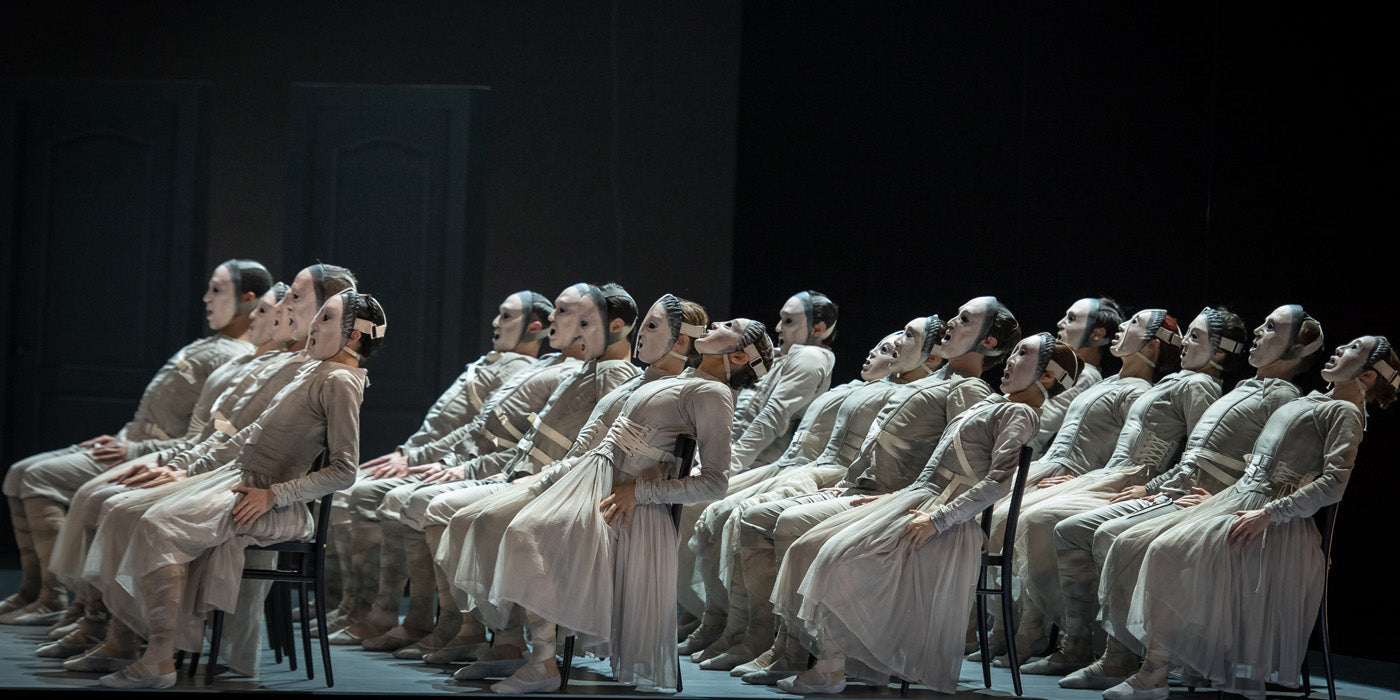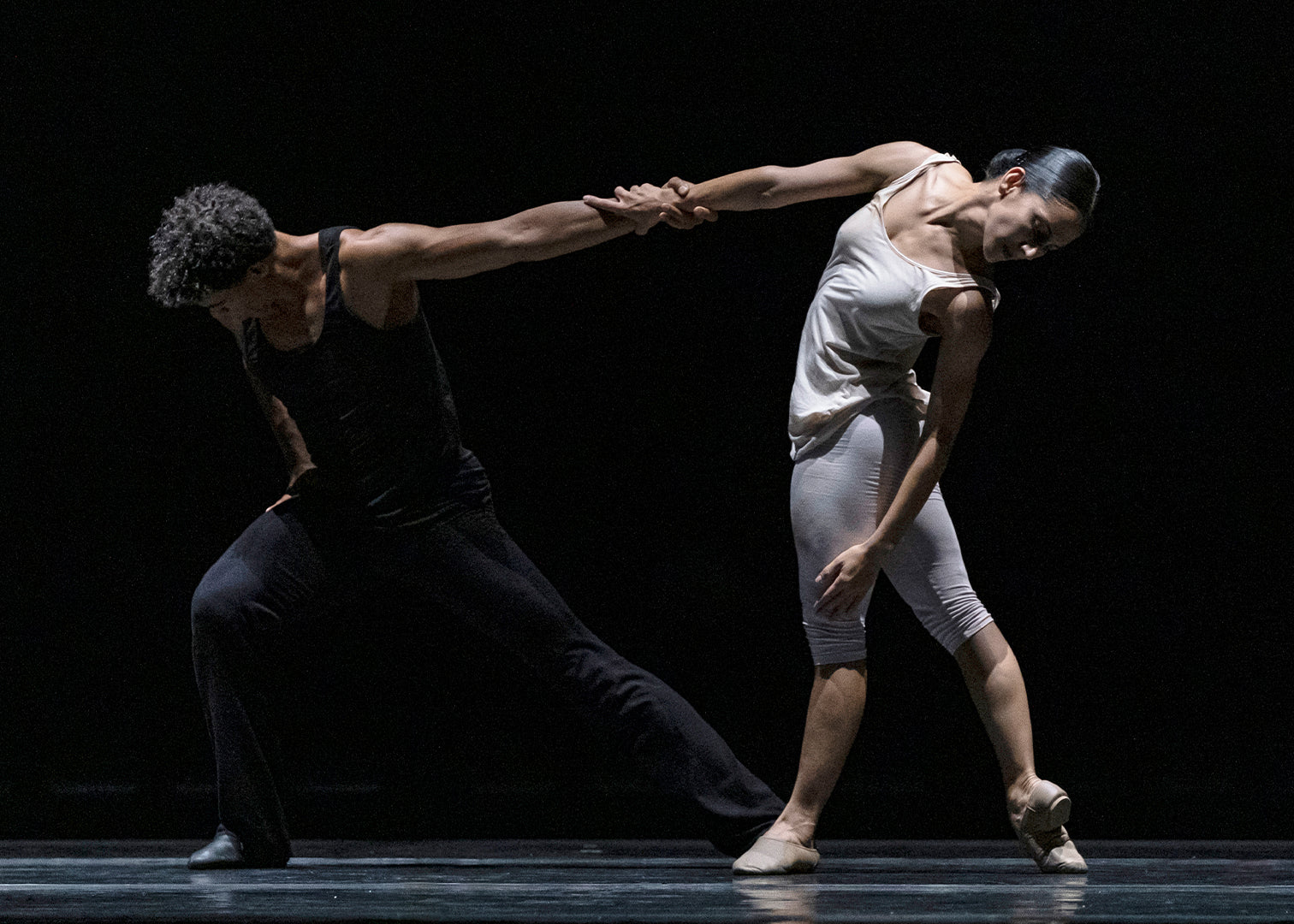Those familiar with Celis' “Les Noces” (a zombie-wedding ballet) will know of his fondness for the macabre. The cast of “Orpheus' Gaze” was like an underworld pageant; Cerberus, oily and menacing, was effectively danced as a pas de trois (Stephen Satterfield, Chen Sheng and Andrew Wright). The cast of the Underworld was grotesque in masks and straightjacket-inspired outfits, moving as a corps de ballet, provided a chaotic backdrop for Hades. Hades himself appeared as a kind a Rave Meister from a Berlin nightclub, appearing primed in a black pleather outfit with neon details, and small circular shades. Robert Deskins was rather brilliant as the charismatic, bizarro-Hades.
There were conceptual twists, too: “Orpheus’ Gaze” opens to a pitch-dark stage, the above ground and scene of Eurydice’s death. Crossing over to Hades, the stage is doused in white light, as though someone opened the refrigerator door. In keeping with the contemporary aesthetic, disenfranchised doors, rather comically floating down from the ceiling, provided the way to Hades, and Death, danced by Marcin Kaczorowski, sported a red clown nose.
Unfortunately, the entertaining, shambolic elements were undone by a genuinely fraught composition. Solos competed for attention making it hard to know where to look. The action was rarely cohesive, and if you didn’t already know the myth, you’d really be at sea. The choreography, squirmy, reminiscent of putting on a cardigan, disintegrated into lyrical pulp whenever Orpheus, danced by André Silva on this evening, or Eurydice, Mahomi Endoh, made an appearance, and otherwise lacked originality. Eurydice without pointe shoes seemed a whimsical choice, given the balletic nature of her dancing.
Playful antics are set aside for the second half of the ballet, “Transfigured Night.” A small full moon faintly illuminates one corner of the inky blue backdrop, shedding light on the sketch of a house in the lower corner. The libretto, Transfigured Night, is a modern example of tragic joy, where a woman shares with her lover she is carrying another man’s child.
A central pair of dancers is shadowed by eight other couples, and it becomes repetitive. Watching it instils in you a power to foresee the action; when one girl is lead away by the hand, you can readily anticipate the fate of the others. Figure by figure, the intensity leeches from the ballet. There is much dashing and halting, and breathlessness, but nuances of the poem escape the choreography, which here, went untransfigured.









comments